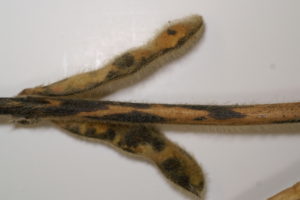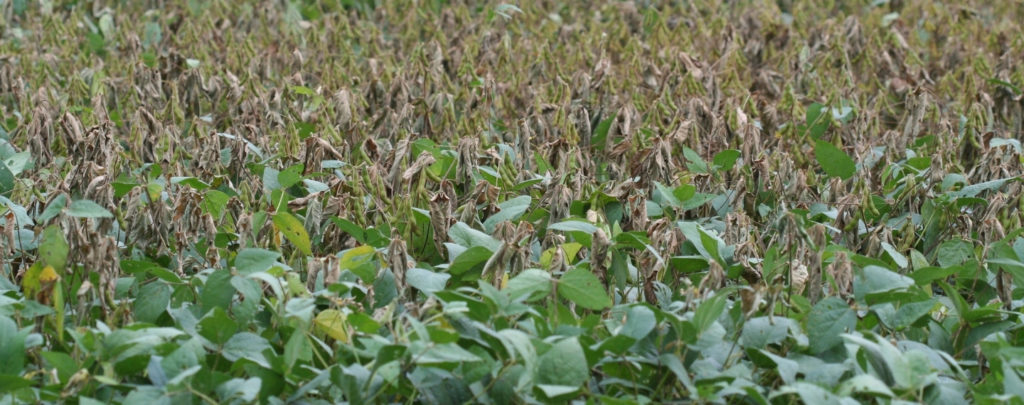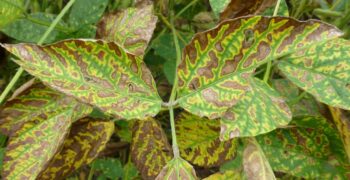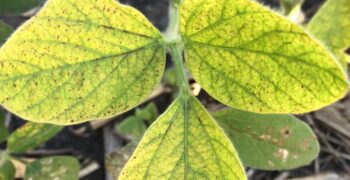Background:
Anthracnose stem blight is a disease that typically comes late in the season (R5-R7). In some cases the disease can come in early reproductive stages (R1-R3) infecting the plant and will cause premature defoliation and yield loss. Symptoms of anthracnose stem blight are reddish discoloration of the veins on the leaf, leaf rolling, and defoliation of the plant. Red to dark-brown blotches will appear on the stem and petioles. When the petioles are infected they will curl or hook. If pods are infected when they are young, the disease can leave them barren and later infection can cause the seed to become infected. When the plant becomes infected later in the season, black fungal masses will appear on the stem, petioles and pods. Warm, wet conditions favor infection and development of anthracnose. Anthracnose will overwinter in crop residue and on infected seed.

Scouting: R1-R7
Scouting should take place as soon as R1. Anthracnose can do the most damage in the early reproductive stages so being aware and knowing it is in your field is key. Looking for curling or hooking of the petiole, reddish to dark brown blotches on the stem and petioles during early reproductive stages are all things to look for. In later reproductive stages, the stem will have black fungal blotches on it.
Management:
- Rotate to another crop such as corn.
- Tillage will reduce the chances of fungal survival.
- Fungicides are labeled to control anthracnose stem blight, application should be done R1-R3.



